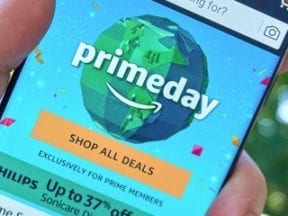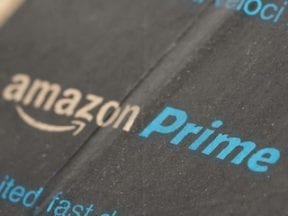Every year since 2017 I’ve written an analysis of Amazon’s Prime Day — 2020, 2019, 2018, 2017. This year’s review includes the online sales of certain competitors rather than Amazon alone. Amazon itself does not share complete Prime Day revenue figures.
Amazon started its promotions before Prime Day — which ran June 21 through 22 — offering customers who spent $10 with small businesses during the two weeks before then a $10 Amazon credit to be used during the 48-hour event. The promotion led to Prime members spending over $1.9 billion across 70 million small businesses during that two-week period, according to Amazon.
Target offered its Deal Days from June 20 through June 22, and Walmart ran its Deals for Days sale from June 21 through June 23. Both companies’ online U.S. results, along with those of Best Buy and Kohl’s, are included in Adobe’s Digital Economy Index of Prime Day 2021, which is based on Adobe Analytics data of 1 trillion visits to retail sites and over 100 million SKUs in the U.S., U.K., and Japan.
Prime Day Sales
According to the Adobe Index, total online spend (not just Amazon) for June 21 and 22 exceeded $11.0 billion — $5.6 billion on day 1 and $5.4 billion on day 2 — a modest 6% growth from last year.
Discounts were greatest for toys at 12% and appliances at 5%, with electronics at just 2%.
Salesforce Shopping Index reported that Prime Day global and U.S.-only online sales growth for non-Amazon retailers were flat compared to the 2020 event in October.
Amazon Results
Adobe’s Index reported that Amazon’s overall sales growth was modest compared with past Prime Days. Prime Day in 2020 was held in October, and perhaps having only eight months between the two events dampened results. Sales from marketplace sellers increased more than Amazon’s own products compared with Prime Day 2020, according to Amazon. This occurred despite many sellers not offering Prime Day discounts because of increases in supply chain costs as well as inventory and warehousing problems. Amazon had imposed inventory limits on sellers using Fulfillment by Amazon.
Nevertheless, global sales of marketplace products grew 12%, according to Digital Commerce 360. That compares to 5% growth for Amazon’s own products. Digital Commerce 360 estimates Amazon’s global sales were $11.2 billion over the two-day period, an increase of 7.6% over the October 2020 event when sales reached $10.4 billion.
According to Amazon, over 250 million items were sold globally on its platform this year. The main Prime Day U.S. deals page featured live-stream promotions hosted by various celebrities and shopping influencers. This year Amazon transitioned from promoting mainly electronic goods and emphasized its private label consumer brands, most prominently kitchen and household goods as well as pet products. On its deal page, Amazon separated its electronics categories from its other private label brands, distinguishing between “Amazon Brands” and “Amazon Devices.”
Top-selling products worldwide for Prime Day 2021 included iRobot Roomba 692 Robot Vacuum and the Keurig K-Slim Coffee Maker. Top sellers for select countries are:
- China: L’Oréal Paris Age Perfect Zell Renaissance Face Care Set for Women, Olay Regenerist Luminous Skin Tone Perfecting Serum;
- France: Philips OneBlade replacement blades, Pampers Nappies;
- Italy: Borbone Represso Coffee Capsules, “Omino Bianco” Liquid Sanitizing Washing Machine Detergent;
- Japan: Yakan-no-Mugicha (barley tea), ICY SPARK from CANADA DRY;
- United Kingdom: Shark Cordless Stick Vacuum Cleaner, CeraVe SA Smoothing Cleanser;
- United States: Waterpik Electric Water Flosser, Orgain Organic Plant Based Protein Powder.
Other Amazon Statistics
Market research firm Numerator conducted a survey of 3,132 Amazon Prime Day shoppers in the U.S. According to those results:
- The average Prime Day 2021 order was $44.75 — a decrease from $54.64 on Prime Day 2020 and $58.91 on Prime Day 2019. About 45% of orders were placed for $20 or less. Fifty-five percent of purchasers placed two or more separate orders.
- The typical Prime Day shopper was a high-income, suburban female aged 35 to 44.
- Sixty-four percent of Prime Day shoppers purchased only at Amazon, but 20% bought from another merchant. Twenty-five percent of Amazon shoppers considered Walmart.com, and 20% considered Target.com.
- The top categories consumers said they purchased were health and beauty
(28%), consumer electronics (28%), household essentials (27%), and apparel and shoes (27%). - Consumer electronics was the fourth most purchased category at 25% of Prime Day shoppers, down from its number one position during last year’s Prime Day with 32% of purchases.




